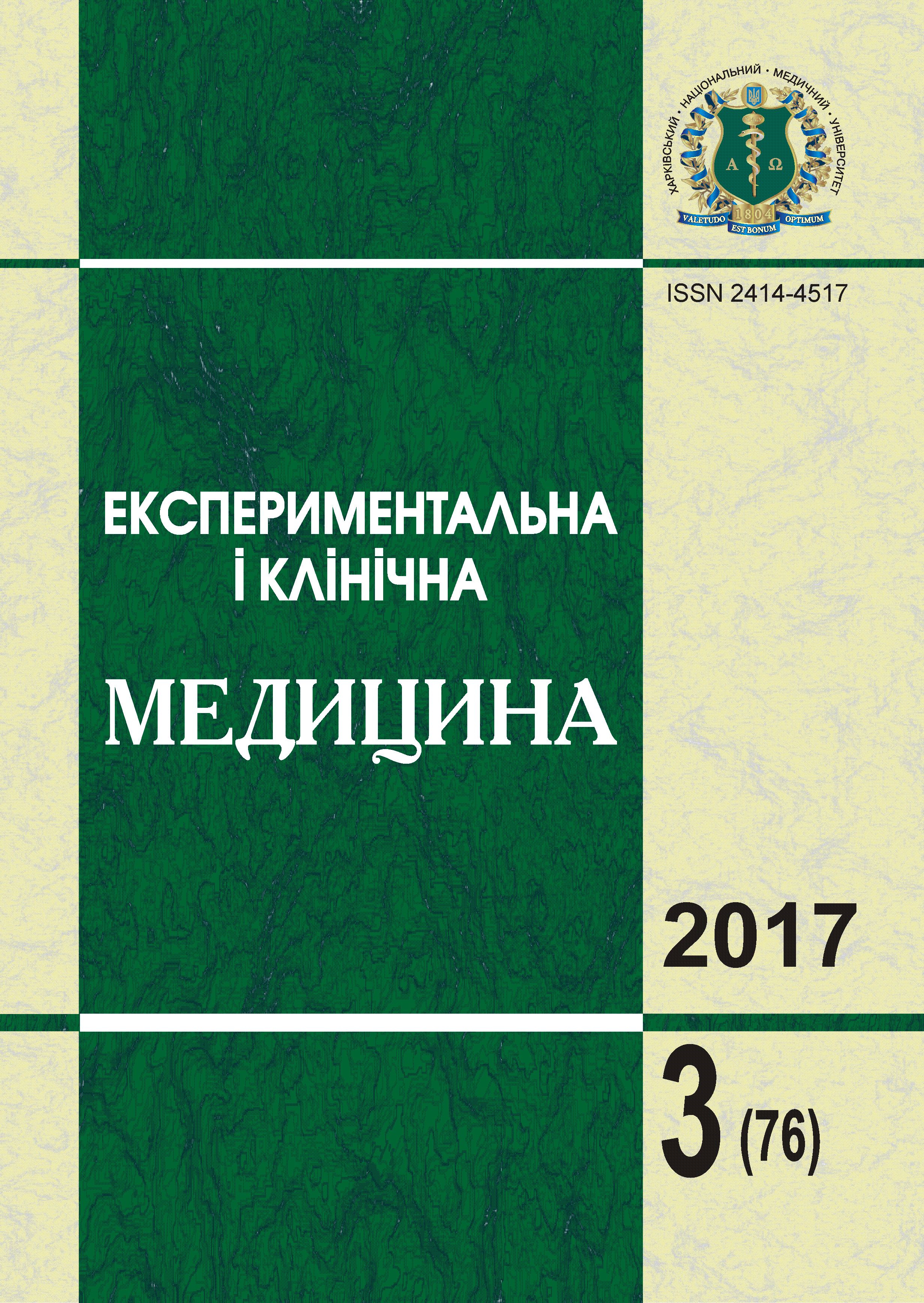Abstract
The article presents the results of diagnosis and treatment of patients with with a combined neurogenic pathology of the lower urinary tract and distal colon hyperactive urinary bladder. The evaluation of effectiveness was carried out by assessing the dynamics of change in complaints, questionnaires, uroflowmetry, and electromyography. The obtained data allowed to develop and optimize methods of treatment of patients with with a combined neurogenic pathology of the lower urinary tract and distal division of the large intestine hyperactive urinary bladder.References
Blandon R.E., Bharucha A.E., Melton L.J. et al. Risk factors for pelvic floor repair after hysterectomy. Obstet Gynecol. 2009. 113(3). P. 601–608.
Nurko S. Coexistence of constipation and incontinence in children and adults /
S. Nurko, S.M. Scott // Best Practice & Research Clinical Gastroenterology. – 2011. –
V. 25, № 1. P. 29–41.
Gormley E.A., Lightner D.J., Burgio K.L. et al. Diagnosis and Treatment of Overactive Bladder (Non-Neurogenic) in Adults: AUA/SUFU Guideline // J. Urology. 2012. V. 188. Issue 6, Supplement. P. 2455–2463.
Samaranayake C.B., Luo C., Plank A.W. et al. Systematic review on ventral rectopexy for rectal prolapse and intussusception. Colorectal disease // J. Association of Coloproctology of Great Britain and Ireland. 2010. V. 12 (6). P. 504–512.
Abrams P., Andersson K.E., Birder L. et al. Fourth International Consultation on Incontinence Recommendations of the International Scientific Committee: Evaluation and treatment of urinary incontinence, pelvic organ prolapse and fecal incontinence. Neurourol Urodyn. 2010. V. 29. P. 213–240.
Stohrer M., Castro-Diaz D., Chartier-Kastler E. et al. Guidelines on neurogenic lower urinary tract dysfunction // Prog. Urol. 2007. May: 17. P. 703–755.
Nygaard I., Shaw J., Egger M.J. Exploring the association between lifetime physical activity and pelvic floor disorders: study and design challenges // Contemp Clin Trials. 2012. V. 33(4). P. 819–827.
